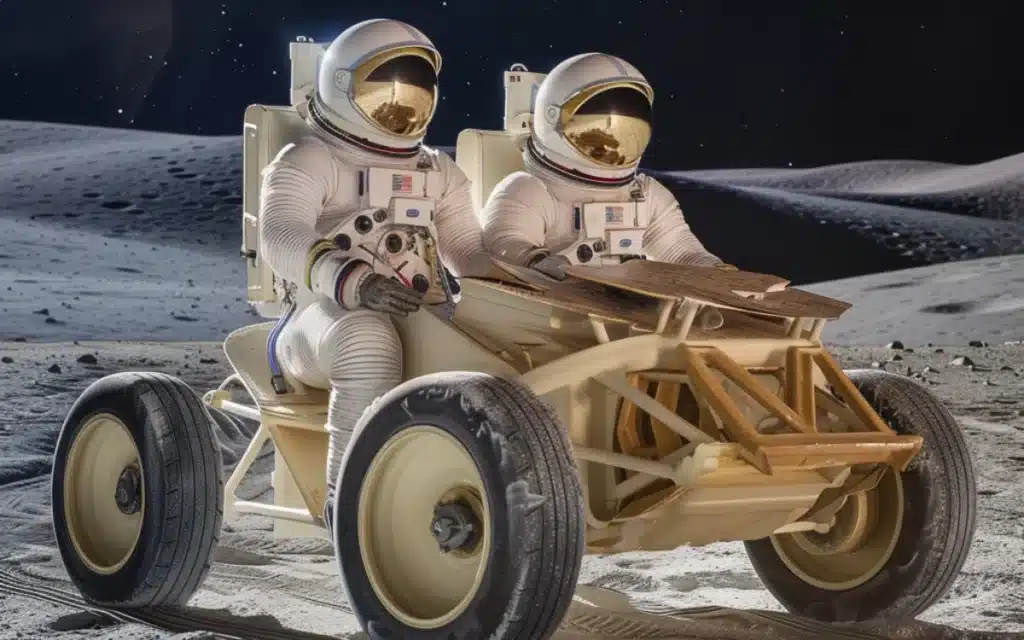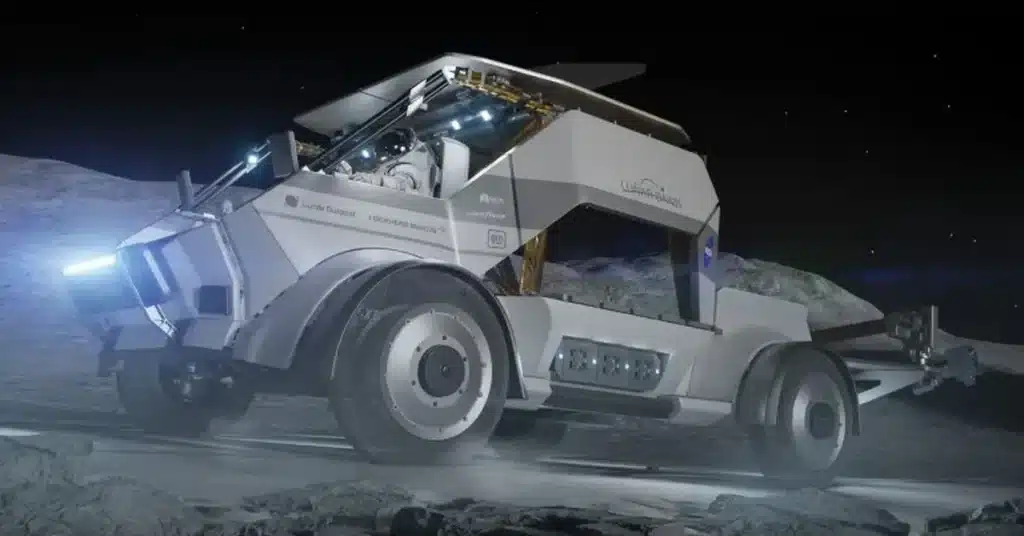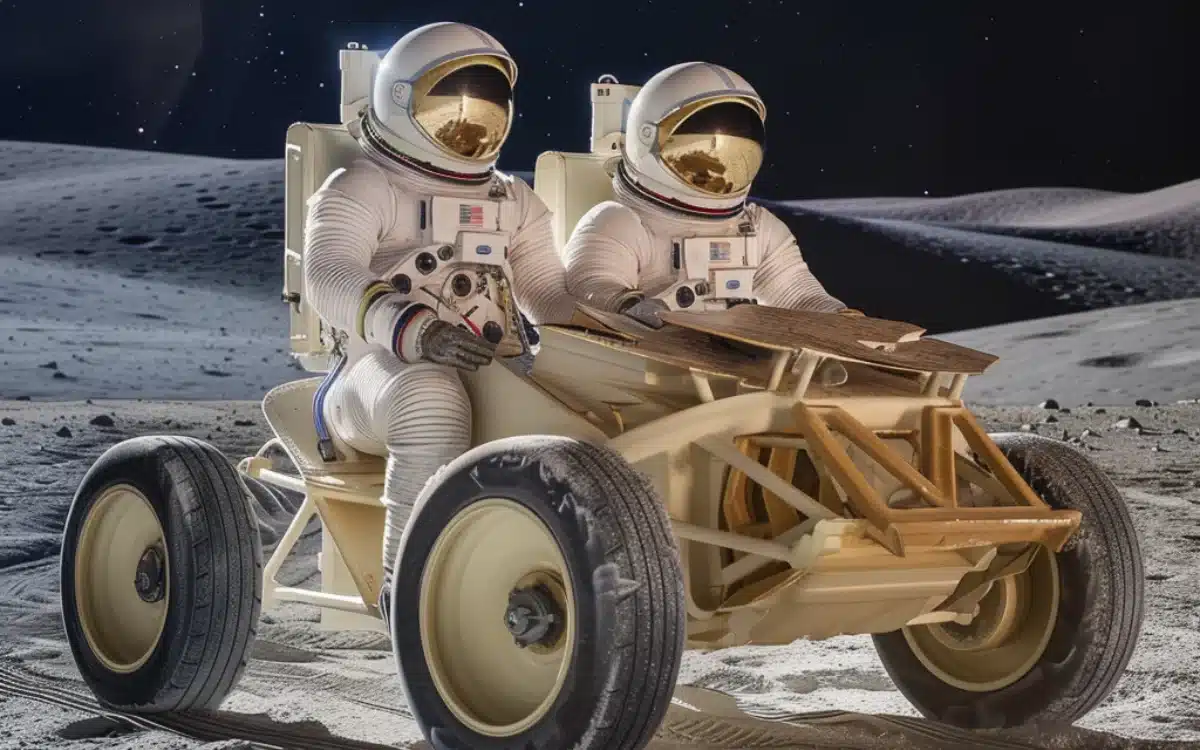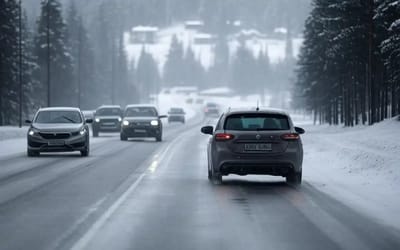NASA reveals lunar racer car that’ll transport astronauts to uncharted destinations on the Moon
- NASA has unveiled a new lunar race car to transport astronauts
- It’s hoped the autonomous vehicle will take them to mysterious lunar destinations considered ‘unreachable’ by foot
- It’s hoped this mission will happen in the 2030s
Published on Apr 04, 2024 at 8:09 PM (UTC+4)
by Amelia Jean Hershman-Jones
Last updated on Apr 05, 2024 at 7:47 PM (UTC+4)
Edited by
Adam Gray
In hopes of reaching uncharted destinations on the Moon, NASA have unveiled a new lunar race car to transport astronauts.
It’s hoped the autonomous vehicle will take them to mysterious lunar destinations considered ‘unreachable’ by foot.
It will help Artemis astronauts reach mysterious, never-before-explored destinations, deemed unreachable by foot, during the 2030s.

REACH MORE! Astronaut reveals what a solar eclipse looks like from space as 2024’s looms
Three companies, including Intuitive Machines, Lunar Outpost, and Venturi Astrolab will develop the new lunar racer car over a year-long study.
Their involvement forms part of a $4.6 billion contract over the next 13 years.
It was Intuitive Machines who were responsible for building the Odysseus Moon lander that suffered an awkward lunar touchdown earlier this year after sending back a final, poignant image.
The lunar terrain rover (LTV) is key to NASA’s 2029 Artemis V mission.

The mission hopes to take two astronauts to the Moon to explore, and another two to refuel the ESA’s refueling module onboard the first-ever lunar space station.
It will include scientific research aimed at recovering the secrets of the lunar south pole.
This is where it’s believed water-based ice would most likely be located.
Its discovery is key to future human habitation on the Moon.
NASA will launch its Artemis III mission, the first human assignment on the Moon since Apollo 17, in 2026.

Nasa has stipulated that the lunar racer car must accommodate two suited astronauts.
It should also be capable of withstanding the extreme conditions of the Moon’s surface.
To put that into context – temperatures can drop to as low as -230 degrees Celsius (-382 degrees Fahrenheit) in some shadowed regions of the Moon’s south pole.
Autonomy is necessary so that the car can be controlled from Earth to explore without astronauts physically being in situ.
“We will use the LTV to travel to locations we might not otherwise be able to reach on foot, increasing our ability to explore and make new scientific discoveries,” Jacob Bleacher, chief exploration scientist in the NASA Exploration Systems Development Mission Directorate, said.

“With the Artemis crewed missions, and during remote operations when there is not a crew on the surface, we are enabling science and discovery on the Moon year-round.”
Yesterday, the White House reportedly directed NASA to create a standard Moon time for all nations.
It follows a similar call by the European Space Agency (ESA) in 2023.
Nasa-led Coordinated Lunar Time (LTC) is hoped to be in place by the end of 2026.
Some of the images in this article were created using AI.
DISCOVER SBX CARS: The global premium car auction platform powered by Supercar Blondie

London-based Amelia cut her journalistic teeth covering all things lifestyle, wellness, and luxury in the UK capital. Fast-forward a decade and the senior content writer and editor has put pen to paper for glossy magazines, busy newsrooms, and coveted brands. When her OOO is on from writing about cars and heading up on-site SEO you can find her spending quality time with her young family, in the gym, or exploring the city she loves.





